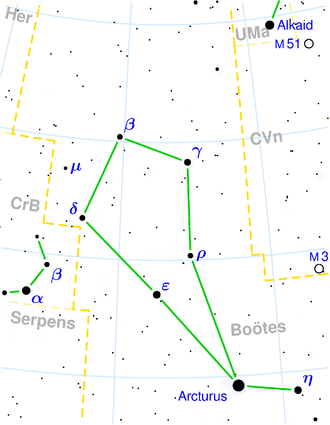NGC 5500
| Galaxy NGC 5500 |
|
|---|---|

|
|
| SDSS recording | |
| AladinLite | |
| Constellation | Bear keeper |
|
Position equinox : J2000.0 , epoch : J2000.0 |
|
| Right ascension | 14 h 10 m 15.2 s |
| declination | + 48 ° 32 ′ 48 ″ |
| Appearance | |
| Morphological type | E2 |
| Brightness (visual) | 13.3 mag |
| Brightness (B-band) | 14.3 mag |
| Angular expansion | 1.0 ′ × 0.9 ′ |
| Position angle | 129 ° |
| Surface brightness | 13.3 mag / arcmin² |
| Physical data | |
| Redshift | 0.006384 +/- 0.000017 |
| Radial velocity | 1914 +/- 5 km / s |
|
Stroke distance v rad / H 0 |
(90 ± 6) x 10 6 ly (27.7 ± 1.9) Mpc |
| history | |
| discovery | Wilhelm Herschel |
| Discovery date | May 12, 1787 |
| Catalog names | |
| NGC 5500 • UGC 9070 • PGC 50588 • CGCG 247-007 • MCG + 08-26-008 • 2MASX J14101524 + 4832458 • Mrk 806 • GC 3804 • H III 674 • LDCE 1043 NED009 | |
NGC 5500 is a 13.3 mag bright elliptical galaxy of the Hubble type E2 in the constellation Bearkeeper in the northern sky . It is estimated to be 90 million light years from the Milky Way and about 25,000 light years in diameter.
The object was discovered on May 12, 1787 by Wilhelm Herschel with an 18.7-inch reflector telescope, who described it as “cF, cS, iR”.
